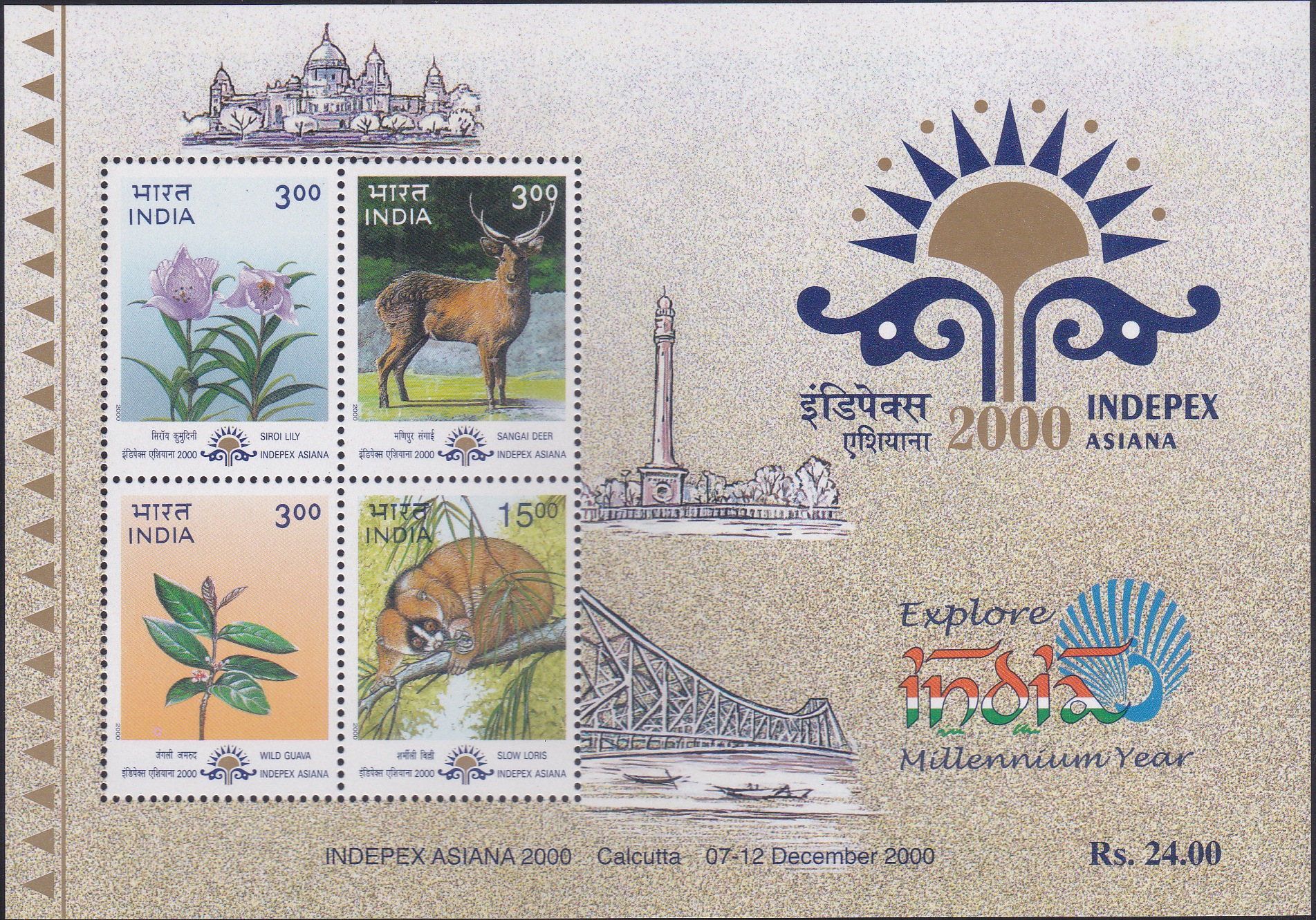
Natural Heritage of Manipur and Tripura
A Miniature Sheet consisting of 4 nos. of postage stamp on the INDEPEX Asiana – 2000 : Natural Heritage of Manipur & Tripura : Siroi Lily, Sangai Deer, Wild Guava and Slow Loris :

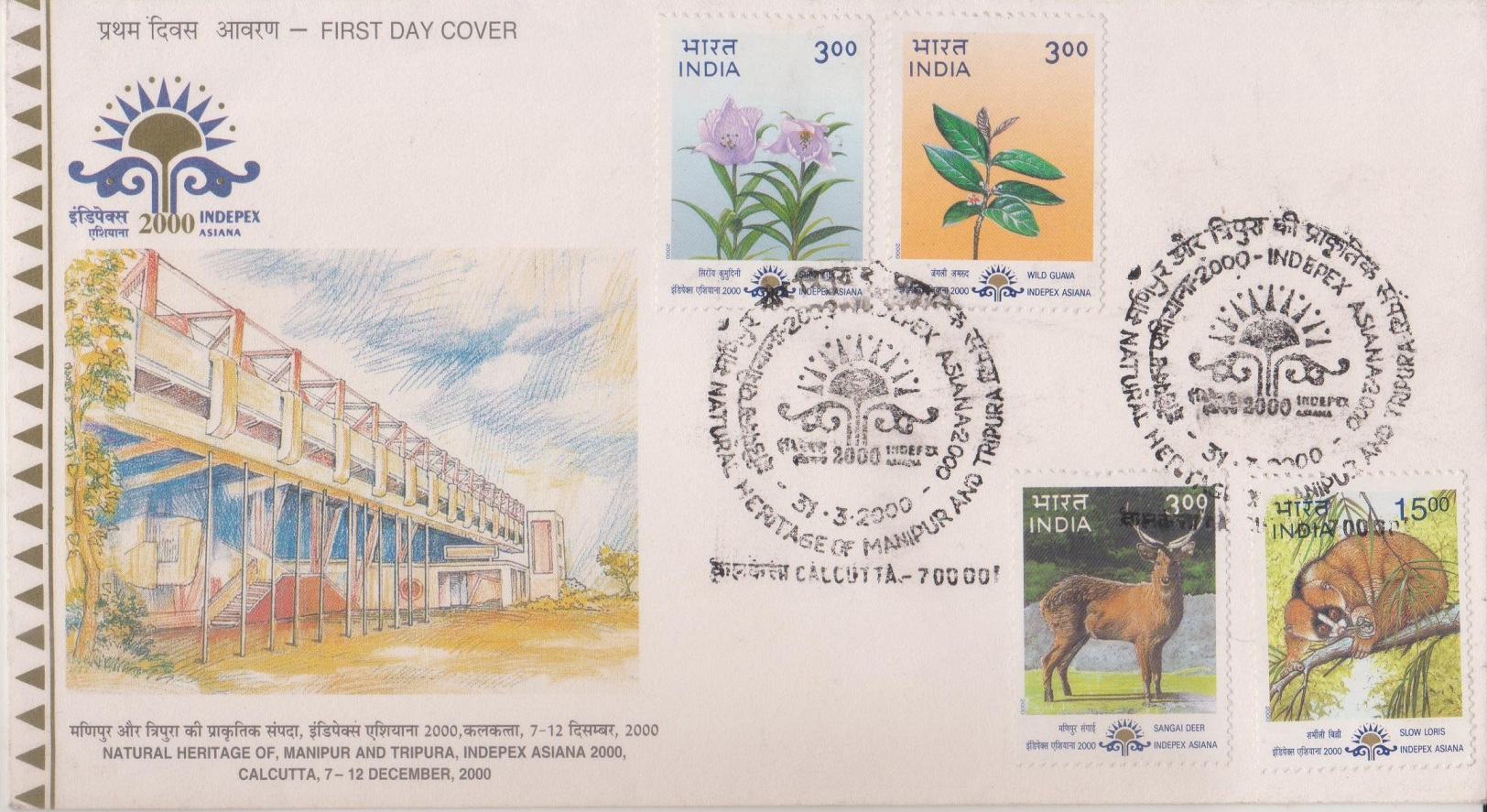 Issued by India
Issued by India
Issued on Mar 31, 2000
Issued for : The Department of Posts issues this set of 4 stamp on the Natural Heritage of Manipur and Tripura in the North East. This is the first set of stamps carrying the Logo of INDEPEX ASIANA 2000, 14th Asian International Philatelic Exhibition being held from 7th to 12th December, 2000, at Netaji Indoor Stadium Calcutta.
Credits :
Stamps : Ramesh Sukumar
Miniature Sheet & FDC : Sankha Samanta
Cancellation : Alka Sharma
Type : Miniature Sheet, Mint Condition
Colour : Five Colour
Denomination : 300, 300, 300 & 1500 Paise
Overall size : 2.9 x 3.9 cms.
Printing size : 2.55 x 3.6 cms.
Perforation : 13.5 x 13.5
Paper : Matt Chromo
Stamps Printed : 1 Million each
Number per issue sheet : 40
Printing Process : Photo Offset
Printer : Calcutta Security Printers Ltd.
About :
- Indepex–Asiana 2000 is the 14th Asian International Stamp Exhibition being organised by the Department of Posts, Government of India in co-operation with the Philatelic Congress of India and under the patronage of Federation of Inter-Asian Philately (FIAP) and the recognition of Federation of International de Philatelie (FIP). It will be hosted at Netaji Indoor Stadium, Calcutta from 7th to 12th December, 2000. Indepex Asiana 2000 is the second Asian International Philatelic Exhibition, hosted by India. It holds a special place in international philately, as it commemorates 50 years of the Republic of India, and also the new millennium. It is being planned in a spectacular way with all the conveniences and facilities that go with such exhibitions. It will give an opportunity to the Asia and Pacific philatelic community to display their collections to a discerning international audience.
- Calcutta, the host city of the exhibition, is one among the four major metropolitan centres of India and the capital city of the state of West Bengal. It is a fascinating city, vibrating with life and having a population of over 10 million. The venue of the exhibition will be the Netaji Indoor Stadium. Calcutta, an air-conditioned indoor stadium-cum-amphitheatre which is a proud landmark of the city. The logo of Indepex-Asiana 2000, designed by Shri Sankha Samanta encaptures the first sunrise at the dawn of the millennium, as witnessed at Katchal, an island in the Nicobar group of islands, India. The sun is seen as rising from the ocean waves. The nine rays emanating from the sun symbolises the ‘navaras‘ or the nine moods described by Bharata, an ancient Indian aesthetician, in his writings of Natyashastra (200BC-200AD). The drawing of the waves is in the form of an ‘alpana‘ which is a decorative and ceremonial form of traditional folk art in West Bengal. The logo design may also be seen as a blossoming of flower, symbolising the joy of a new beginning, the exploration of the magical world of stamps.
- On the occasion the Department of Posts is issuing a set of 4 stamps on the flora and fauna of Manipur and Tripura with the objective of focussing public attention on the rich bio-diversity of North-East India.
- Siroi Lily
Siroi Lily (Lilium macklinae), an Iris species, is a beautiful lily found only in the upper reaches of Sirohi hill ranges of Manipur. The plant grows in the Sirohi Kasom area of the hills on the windward side and eastern flank. It starts flowering with the advent of spring and continues to flower for about two months. - Sangai Deer
Sangai Deer (Cervus eldi eldi) or brow antlered deer is a sub-species of the deer available only in Manipur. The deer is distinctive for its peculiar bow shaped antler, unique body structure and its elegant movement, which is often described as dancing. At one time it was considered to have become extinct. Systematic efforts to conserve the species started from 1950 onwards and has succeeded in arresting the declining trend in the population of Sangais. Today the Keibul Lamjao National Park abounds with more than 150 Sangais, an appreciable progress from the 14 heads counted in 1974.
- Wild Guava
Wild Guava (Psidium guineense) is a rare plant of India found only in Tripura. The fruit of wild guava is edible but it is smaller in size than the guava and sour in taste. The plant is of smaller bushy type but if protected attains the size of a small tree. Constant depletion due the firewood collection is endangering this plant, and special protection is now under consideration.
- Slow Loris
Slow Loris (Nycticebus coucang) is a round-headed, round-eyed lemur found in Tripura and adjoining parts of North-East India. Three geographical races are known, in India. Very distinctive is a brown stripe, marking the middle line of its back and terminating on the crown; distinctive also are the brown circles round its lustrous, owl-like eyes. The Slow Loris is believed to spend the day in sleep waking at dusk to hunt for food.
- A miniature sheet featuring the four stamps is also being brought out, which in addition to Indepex Asiana 2000, will also commemorate the ‘Explore India in the Millennium Year‘ programme of the Ministry of Tourism. The First Day Cover portrays the venue, Netaji Indoor Stadium Calcutta and the logo of Indepex-Asiana 2000.
- Text : Based on material supplied by sponsors.


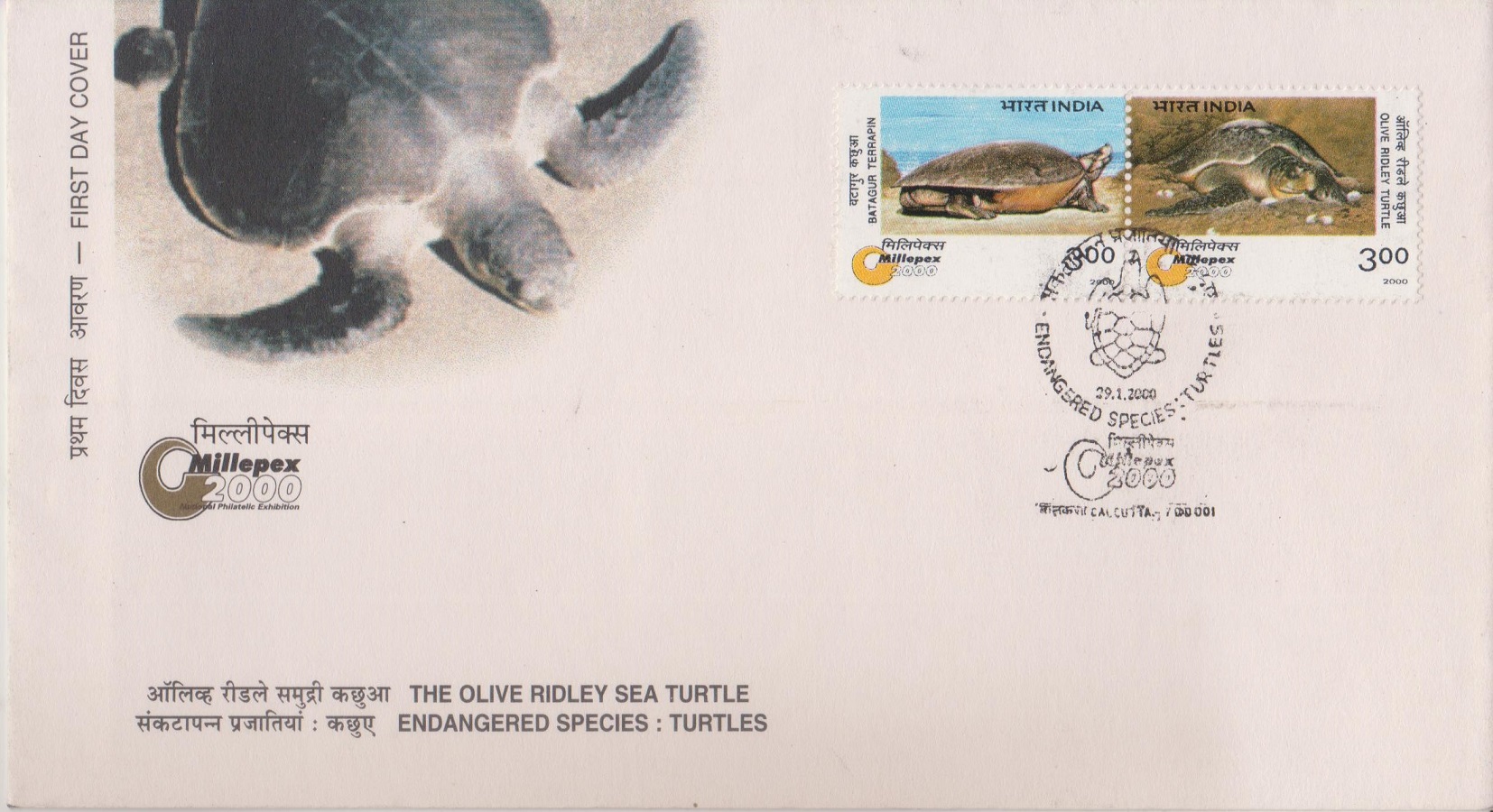
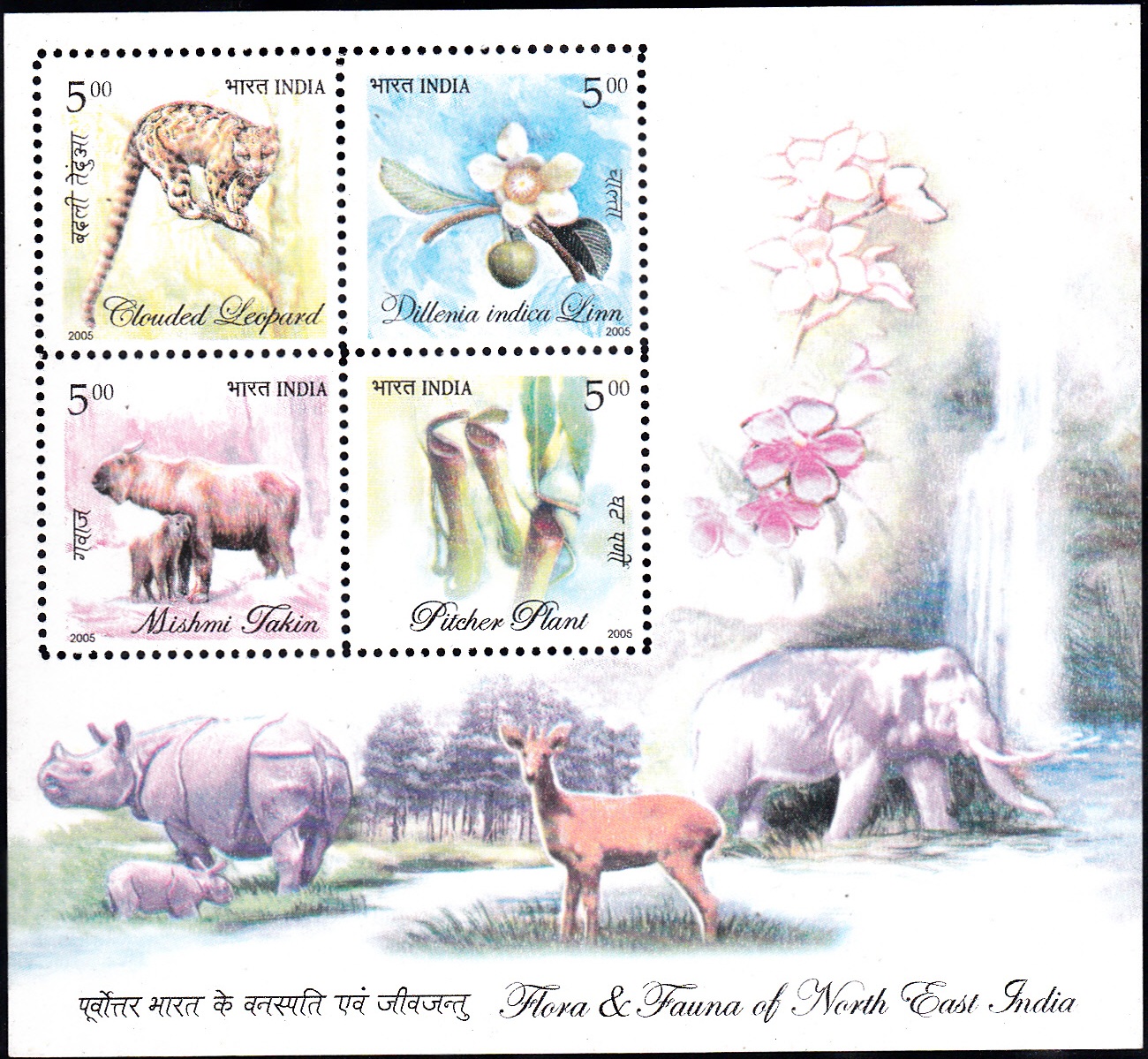
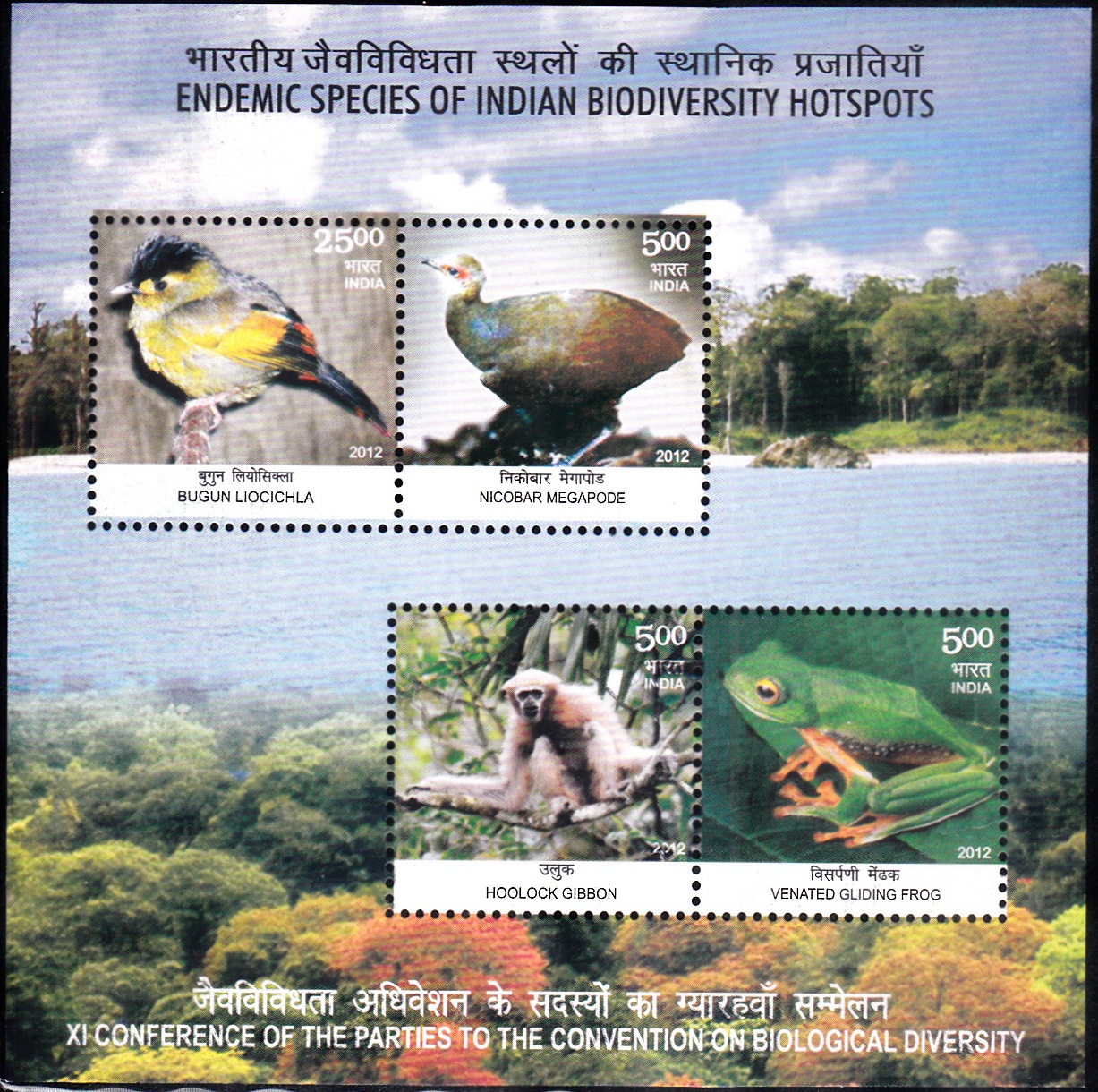
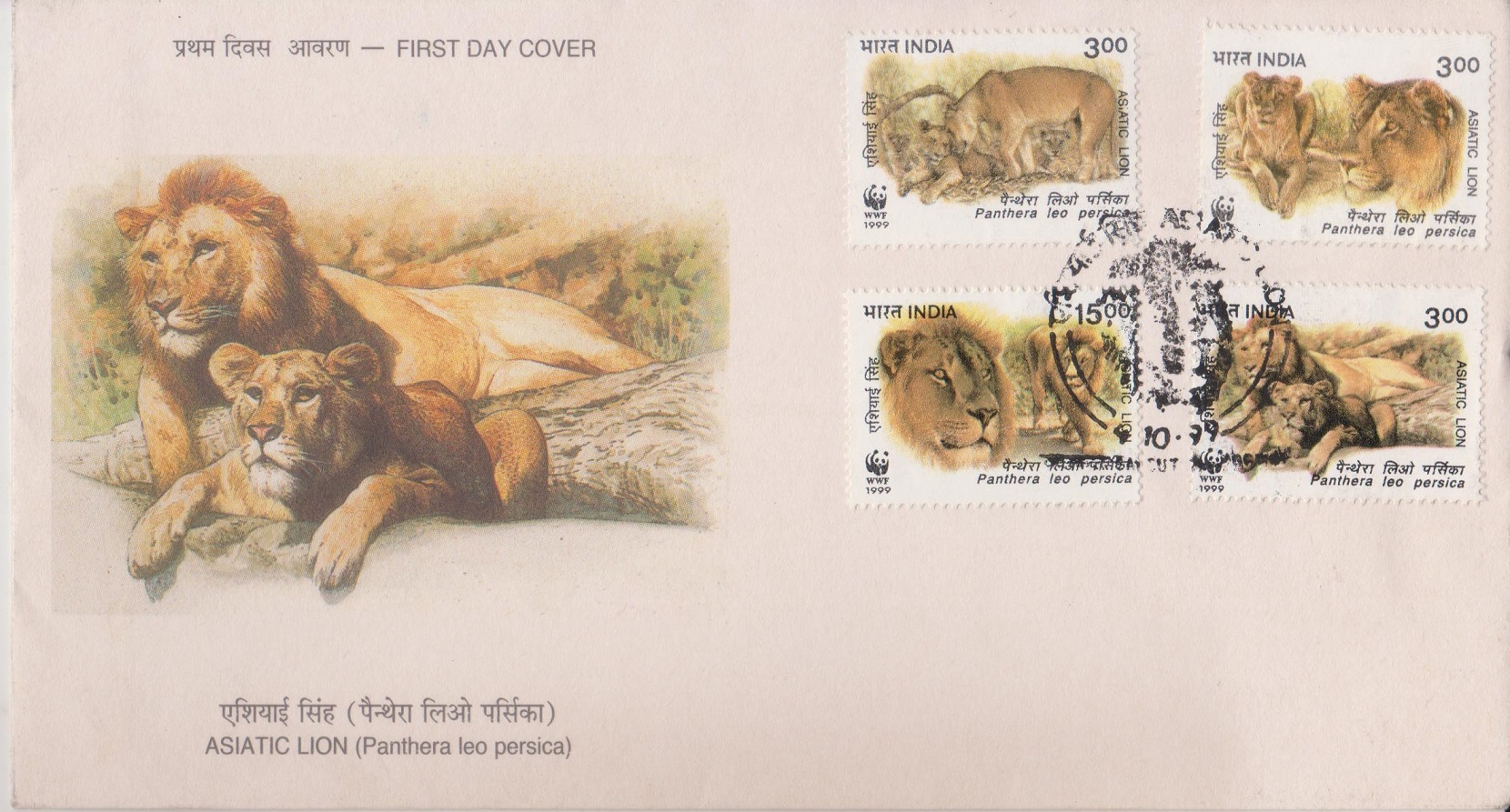
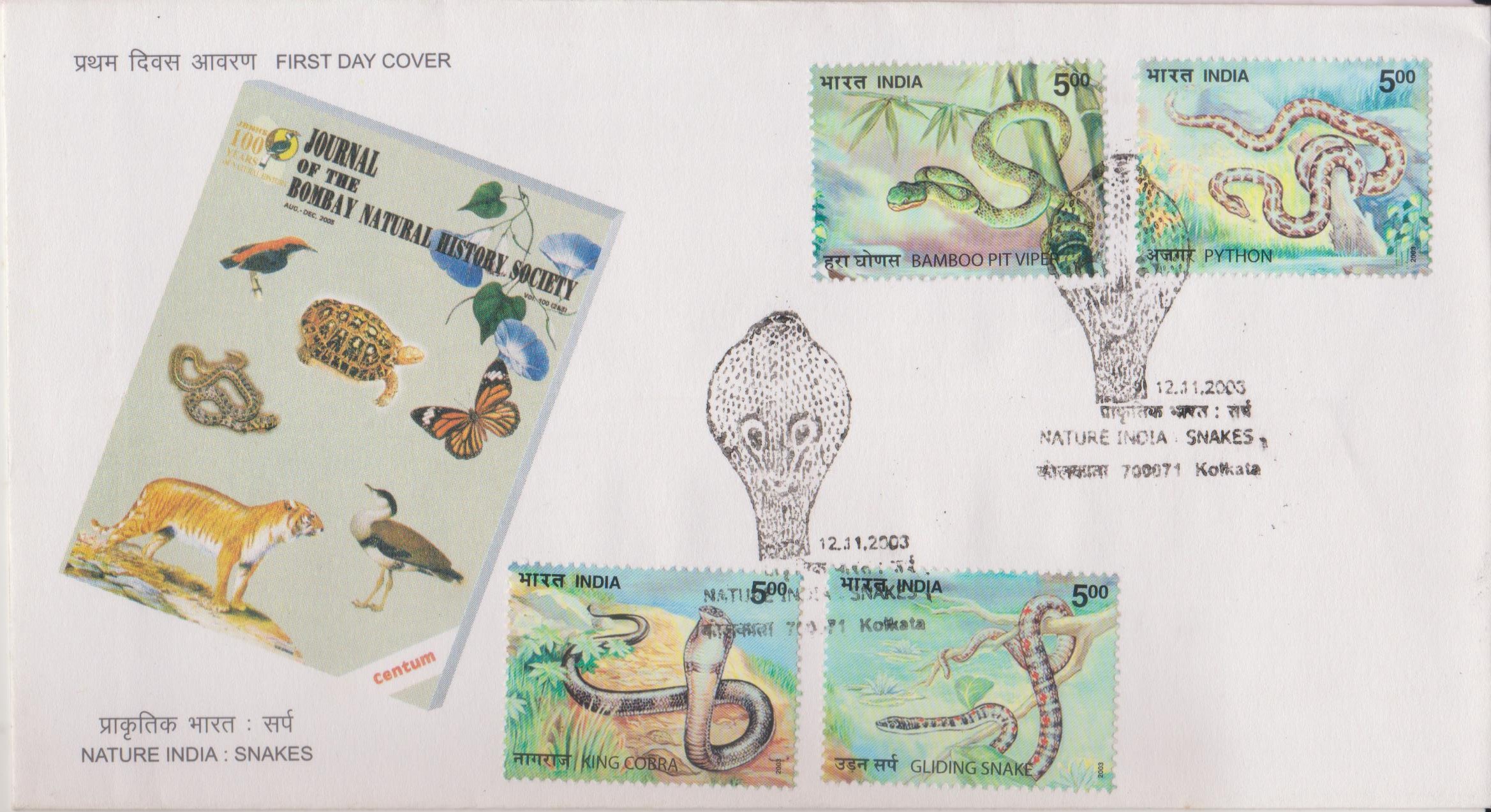
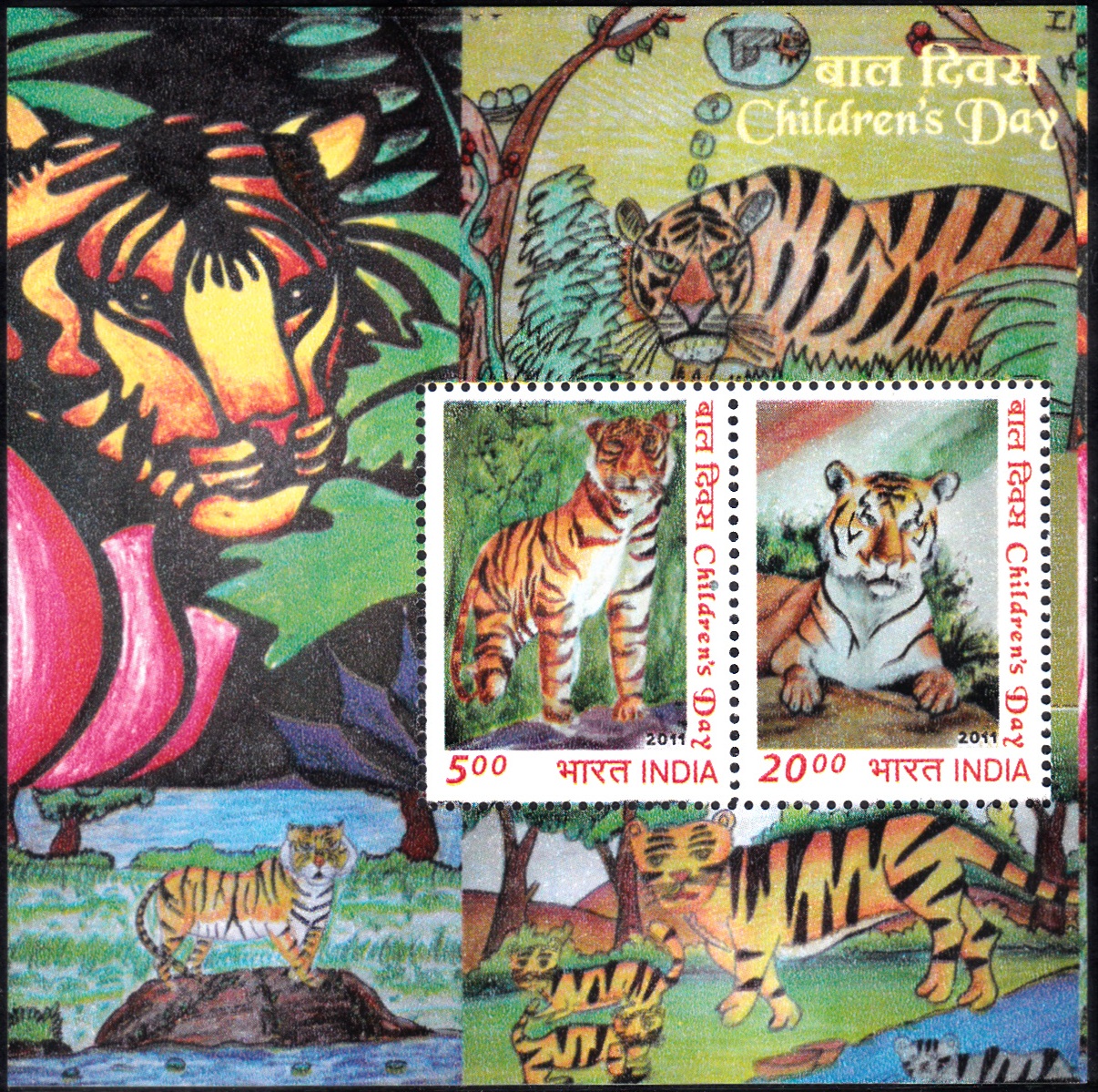
[…] species of Fauna not found in other parts of the world. The Rhinoceros, the Indian Swamp Deer, the Brow-antlered Deer, the Spotted Deer or Chital, Nilgai or the Blue Bull, the Blackbuck and the four-horned Antelope do […]